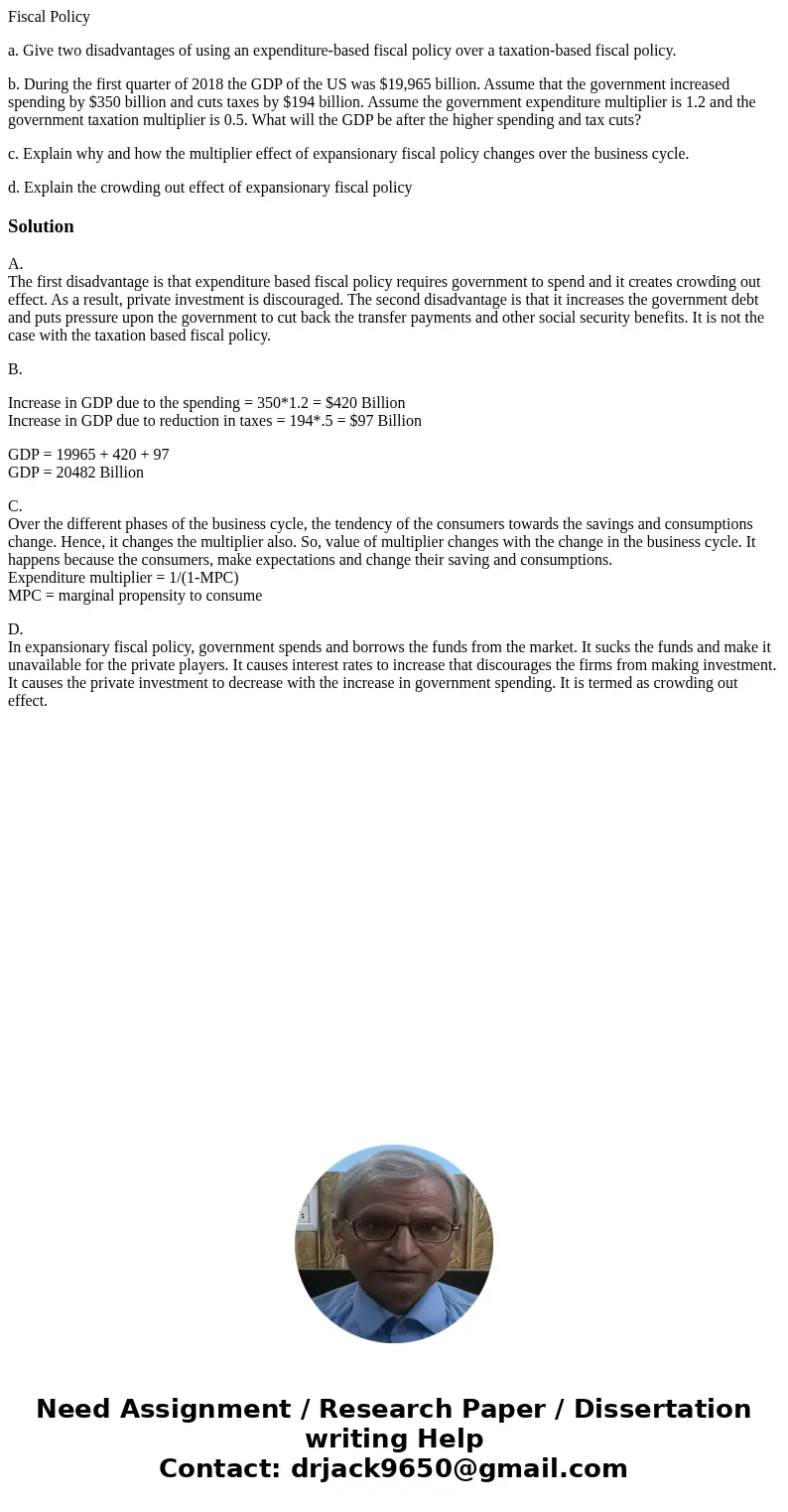Fiscal Policy a Give two disadvantages of using an expenditu
Fiscal Policy
a. Give two disadvantages of using an expenditure-based fiscal policy over a taxation-based fiscal policy.
b. During the first quarter of 2018 the GDP of the US was $19,965 billion. Assume that the government increased spending by $350 billion and cuts taxes by $194 billion. Assume the government expenditure multiplier is 1.2 and the government taxation multiplier is 0.5. What will the GDP be after the higher spending and tax cuts?
c. Explain why and how the multiplier effect of expansionary fiscal policy changes over the business cycle.
d. Explain the crowding out effect of expansionary fiscal policy
Solution
A.
The first disadvantage is that expenditure based fiscal policy requires government to spend and it creates crowding out effect. As a result, private investment is discouraged. The second disadvantage is that it increases the government debt and puts pressure upon the government to cut back the transfer payments and other social security benefits. It is not the case with the taxation based fiscal policy.
B.
Increase in GDP due to the spending = 350*1.2 = $420 Billion
Increase in GDP due to reduction in taxes = 194*.5 = $97 Billion
GDP = 19965 + 420 + 97
GDP = 20482 Billion
C.
Over the different phases of the business cycle, the tendency of the consumers towards the savings and consumptions change. Hence, it changes the multiplier also. So, value of multiplier changes with the change in the business cycle. It happens because the consumers, make expectations and change their saving and consumptions.
Expenditure multiplier = 1/(1-MPC)
MPC = marginal propensity to consume
D.
In expansionary fiscal policy, government spends and borrows the funds from the market. It sucks the funds and make it unavailable for the private players. It causes interest rates to increase that discourages the firms from making investment. It causes the private investment to decrease with the increase in government spending. It is termed as crowding out effect.

 Homework Sourse
Homework Sourse